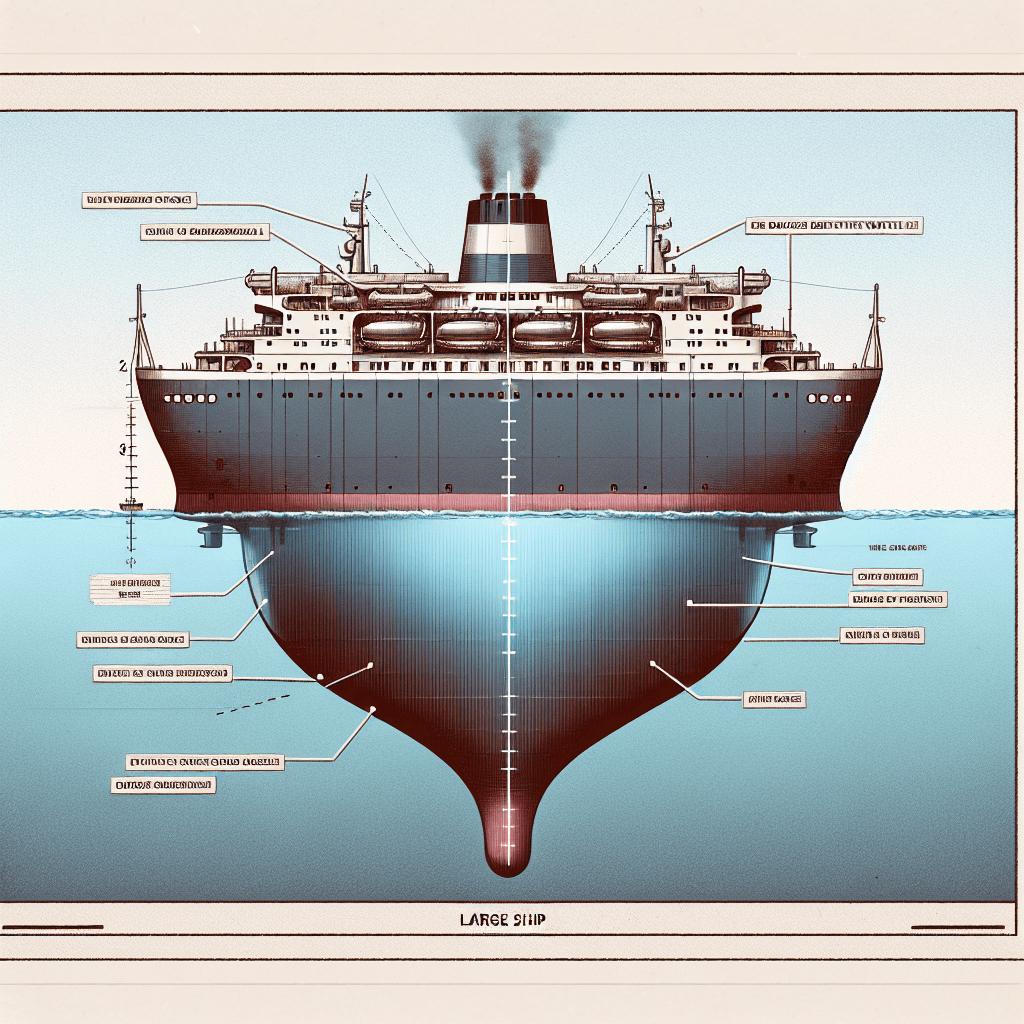Why do many large ships have a bulbous nose below the waterline
It looks like a clumsy battering ram, but that strange underwater nose is actually a brilliant engineering trick that saves ships millions in fuel by cleverly canceling out their own waves.


Too Long; Didn't Read
TLDR: The bulbous bow creates its own wave that cancels out the main wave generated by the ship. This reduces drag and water resistance, making the ship more fuel-efficient and saving money.
More Than Just a Nose: Why Do Many Large Ships Have a Bulbous Nose Below the Waterline?
Have you ever looked at a massive cargo ship or a majestic cruise liner and noticed the strange, protruding bulb at its front, hidden just below the waterline? It’s a feature that might seem odd, perhaps even counterintuitive. Is it for ramming icebergs? A modern-day battering ram? The truth is far more scientific and crucial to the efficiency of modern shipping. This prominent feature, known as a bulbous bow, is a masterpiece of naval engineering designed for one primary purpose: to make the ship's journey through the water as smooth as possible. This post will dive into the fascinating physics behind the bulbous bow, exploring how it works and why it’s a non-negotiable feature for most of the world's largest vessels.
The Science of Wave Cancellation
At its core, the function of a bulbous bow is to manipulate the water in front of the ship to reduce drag. As a ship with a conventional V-shaped bow plows through the ocean, it pushes water away, creating a large wave system at its front, known as a bow wave. Creating and pushing this wave requires a tremendous amount of energy, which translates directly into fuel consumption. This specific type of drag is called wave-making resistance.
The bulbous bow is designed to fight waves with more waves. The bulb, positioned below the waterline, creates its own separate wave system that is precisely out of sync with the main bow wave.
Here’s how it works:
- The bulbous bow, traveling underwater, generates a low-pressure zone and a wave that starts with a trough (a dip).
- The main bow, located just above and behind the bulb, creates a wave that starts with a crest (a peak).
- When these two waves meet, they interfere with each other. The trough from the bulb's wave aligns with the crest from the main bow's wave.
This phenomenon, known as destructive interference, effectively cancels out or significantly reduces the size of the overall bow wave. With a smaller wave to push, the ship experiences less resistance and glides through the water much more efficiently.
The Tangible Benefits: Fuel, Speed, and Stability
The clever physics of wave cancellation translates into major real-world advantages for the shipping industry. The primary benefit is a dramatic increase in fuel efficiency. By reducing wave-making resistance, a ship's engines don't have to work as hard to maintain a certain speed. According to research and industry data, a well-designed bulbous bow can reduce fuel consumption by as much as 5% to 15%. For a massive container ship that consumes tons of fuel per day, this represents millions of dollars in savings over the vessel's lifespan and a significant reduction in carbon emissions.
Beyond fuel savings, the benefits include:
- Increased Speed: For the same amount of engine power, a ship with a bulbous bow can achieve a higher speed than one without.
- Greater Range: Better fuel efficiency means a ship can travel farther on a single tank of fuel, increasing its operational range.
- Improved Stability: By altering the water flow, the bulb can also dampen the ship's pitching motion (the up-and-down movement of the bow), leading to a smoother ride in rough seas. This reduces stress on the hull and can be particularly important for passenger comfort on cruise ships.
A Tool for a Specific Job
While incredibly effective, the bulbous bow is not a one-size-fits-all solution. Its performance is highly dependent on the ship operating at a specific speed and draft (how deep it sits in the water). The bulb is meticulously designed for the vessel's typical cruising speed. If the ship travels too slowly, the wave-canceling effect diminishes, and the bulb itself can add more drag than it saves.
This is why you see bulbous bows primarily on large vessels designed for long-distance travel at a relatively constant, high speed. Think of:
- Container ships
- Oil tankers
- Bulk carriers
- Cruise liners
You are far less likely to find them on slower vessels like tugboats, some ferries, or ships that frequently stop and change speed, as the benefits would not be consistently realized.
Conclusion
The bulbous nose on a large ship is far from a simple aesthetic choice; it is a critical piece of technology rooted in the principles of fluid dynamics. By generating its own wave to cancel out the ship's natural bow wave, this ingenious feature significantly reduces drag, making global shipping more economically and environmentally sustainable. It stands as a testament to how a deep understanding of physics can solve massive real-world challenges. So, the next time you see one of these ocean giants, you’ll know that the hidden bulb below the waterline is a silent, powerful force, making global trade more efficient one wave at a time.
More Articles

Why do movie punches sound so much crunchier and louder than real ones?
That sickening, bone-crunching punch you hear in the movies is a lie, and the secret ingredient is probably sitting in your refrigerator right now.

What makes a beer bottle suddenly foam over just from a light tap on top?
It’s not magic, it’s a shockwave; discover the explosive physics that turns a gentle tap on your beer bottle into an instant foamy geyser.

Why do police officers touch the back of a car during a traffic stop?
It’s not a random habit; that simple touch is a calculated, old-school tactic designed to leave a crucial and potentially life-saving piece of evidence behind.